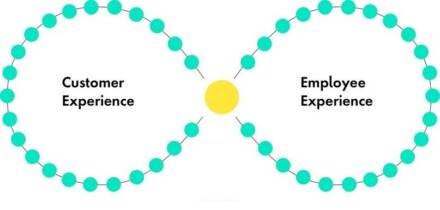Healthcare professionals are drowning in paperwork. With doctors spending up to 50% of their time on documentation rather than patient care, something’s got to give.
Traditional medical documentation creates a massive bottleneck that’s affecting both provider satisfaction and patient outcomes. The constant struggle with time-consuming note-taking, illegible handwriting, and inconsistent formats has reached a breaking point.
AI-powered documentation tools are stepping in to rescue overwhelmed healthcare teams from administrative burden while improving the quality and consistency of patient records.
Streamlined Documentation Process That Saves Critical Time
With healthcare professionals spending up to 50% of their time on documentation rather than patient care, the most immediate impact of SOAP note generator technology becomes clear. These innovative healthcare documentation tools are reclaiming hours of valuable time that can be redirected toward actual patient care.
Automated Data Entry Reduces Documentation Time by 60-80%
Modern SOAP note generator systems can slash documentation time by more than half. Instead of manually typing every detail, healthcare providers can simply speak their observations and assessments. The system automatically formats this information into proper SOAP structure.
The time savings are remarkable. What used to take 15-20 minutes per patient now takes just 3-5 minutes. For a busy practice seeing 30 patients daily, that’s saving 6-8 hours of documentation work.
Real-Time Voice-to-Text Capabilities for Hands-Free Documentation
Voice recognition technology has evolved dramatically. Today’s systems understand medical terminology with impressive accuracy. Doctors can dictate notes while examining patients, creating a more natural workflow.
This hands-free approach means providers can maintain eye contact with patients while still capturing detailed notes. It’s a game-changer for building stronger patient relationships.
Template Customization for Different Medical Specialties
Different medical specialties have unique documentation needs. Cardiology notes differ significantly from psychiatric evaluations. Modern systems offer specialty-specific templates that capture the most relevant information for each field.
These customizable templates ensure nothing important gets missed while eliminating irrelevant fields that slow down the process.
While saving 60-80% of documentation time is impressive, speed means nothing without accuracy in healthcare. The next critical advantage lies in how SOAP note generator systems dramatically reduce medical errors and enhance clinical precision.
Enhanced Accuracy and Reduced Medical Errors
Traditional handwritten notes are prone to human error. Illegible handwriting leads to misinterpretation, and rushed documentation often misses critical details. AI-powered systems address these fundamental problems with systematic accuracy improvements.
AI-Powered Clinical Decision Support
- Flags potential drug interactions and contraindications.
- Suggests appropriate diagnostic codes and screenings.
- Acts as a real-time clinical review partner to catch oversights early.
Standardized Terminology & ICD-10/CPT Code Automation
- Reduces costly manual coding errors.
- Automatically suggests accurate ICD-10 and CPT codes based on documentation.
- Promotes consistent language usage across all providers for clearer communication.
Built-in Error Detection & Quality Assurance
- Identifies missing documentation elements or inconsistencies.
- Flags unusual medication dosages or abnormal entries.
- Ensures compliance with regulatory standards and clinical best practices.
EHR System Integration
- Seamlessly connects with existing Electronic Health Records.
- Transforms documentation into an intelligent, unified workflow.
- Amplifies the value of SOAP notes across the entire care continuum.
Seamless Electronic Health Records Integration
Universal compatibility with existing electronic health records systems eliminates the friction that often prevents technology adoption in healthcare settings. Modern documentation tools work with virtually every major EHR platform without requiring expensive system overhauls.
Universal EHR Compatibility Across Major Platforms
Whether your practice uses Epic, Cerner, Allscripts, or smaller EHR systems, today’s SOAP note generator tools integrate smoothly. This compatibility means you won’t lose your existing patient data or need to retrain staff on entirely new systems.
The integration process typically takes hours, not weeks. Most systems offer plug-and-play functionality that connects with your current EHR through secure APIs.
Bi-Directional Data Synchronization Capabilities
Information flows both ways between the documentation tool and your EHR. Patient demographics, medication lists, and previous visit notes automatically populate in new SOAP notes. Completed notes instantly sync back to the patient’s permanent record.
This bi-directional sync eliminates duplicate data entry and reduces the chance of information getting lost between systems.
Cloud-Based Accessibility for Multi-Location Practices
Cloud-based systems allow providers to access patient information and create notes from anywhere with internet access. This flexibility is crucial for practices with multiple locations or providers who work across different facilities.
Security remains paramount with enterprise-grade encryption and HIPAA-compliant cloud infrastructure protecting sensitive patient data.
Universal compatibility and bi-directional data sync lay the technical foundation, but the real question remains: how does this technology translate into better patient outcomes? The answer lies in how comprehensive documentation enables superior care coordination and clinical insights.
Improved Patient Care Through Better Documentation
Enhanced documentation quality plays a pivotal role in improving patient outcomes. Thorough, accurate, and accessible SOAP notes empower care teams to make more informed treatment decisions. Digital systems offer comprehensive patient history tracking, allowing providers to quickly identify symptom patterns, assess medication effectiveness, and personalize care based on past responses.
These tools also strengthen care coordination, ensuring that all providers—from specialists to nurses—have consistent, detailed insights into a patient’s condition and treatment history. Standardized documentation reduces redundant work and enhances care quality. Additionally, aggregated SOAP data fuels predictive analytics, helping identify health risks before symptoms arise.
These proactive insights not only boost clinical outcomes but also generate substantial cost savings and measurable ROI for healthcare organizations.
Significant Cost Reduction and ROI Benefits
The financial impact of implementing documentation technology extends well beyond the initial investment. Practices typically see positive ROI within 6-12 months through multiple cost-saving mechanisms and revenue improvements.
Reduced Administrative Overhead and Staffing Costs
Automated documentation reduces the need for additional administrative staff to handle transcription and data entry tasks. Some practices can reassign clerical staff to more valuable patient-facing roles.
The reduced time burden on providers means they can see more patients daily without working longer hours. This increased throughput directly translates to higher revenue potential.
Decreased Claim Denials Through Accurate Documentation
Insurance claim denials often result from inadequate or inaccurate documentation. AI-powered systems ensure notes contain all required elements for successful claims processing.
Practices report 20-30% reductions in claim denials after implementing automated documentation systems. Each approved claim that would have been denied saves both the claim amount and the administrative cost of resubmission.
Improved Billing Efficiency and Revenue Cycle Management
Automated coding suggestions speed up the billing process while improving accuracy. Faster claim submission leads to quicker reimbursements and improved cash flow.
The system can flag missing documentation elements that are required for optimal reimbursement, ensuring practices capture the full value of services provided.
Significant cost savings from improved efficiency are just the beginning—avoiding regulatory penalties and audit failures provides even greater financial protection. Let’s examine how SOAP note generator systems serve as your first line of defense against compliance risks and legal exposure.
Regulatory Compliance and Risk Mitigation
Healthcare documentation must meet strict regulatory standards. Failure to comply can result in significant penalties, legal liability, and damage to practice reputation. Automated systems help ensure consistent adherence to all regulatory requirements.
Enterprise-Grade Security
- End-to-end encryption safeguards patient data.
- Secure login and role-based access controls prevent unauthorized access.
- Regular system updates address evolving cybersecurity threats.
Automated Audit Trails
- Every action is logged and timestamped.
- Provides complete accountability for regulatory audits.
- Easily generates compliance reports during inspections.
Medicare & Insurance Documentation Adherence
- AI tracks payer-specific documentation rules.
- Prompts providers to include required details for claims.
- Reduces denials and ensures faster reimbursement.
Legal and Financial Protection
- Built-in compliance features protect against HIPAA violations.
- Supports regulatory readiness and minimizes audit risks.
Healthcare Professional Satisfaction and Burnout Prevention
The healthcare field is grappling with a burnout crisis, largely driven by overwhelming administrative tasks. Documentation technology offers a vital solution by easing this burden and allowing providers to refocus on patient care. When documentation is streamlined, healthcare professionals can maintain a healthier work-life balance, avoiding the need to take charts home and reducing after-hours stress.
This shift not only enhances job satisfaction but also allows for more meaningful patient interactions. With less time spent on paperwork, providers can be more present during appointments, improving both patient outcomes and therapeutic relationships. Additionally, automation reduces stress and minimizes documentation errors.
Specialty-specific tools, like SOAP note generators, further support mental health, physical therapy, and primary care professionals by addressing their unique documentation needs.
FAQs
Why are SOAP notes important in healthcare?
By providing a chronological record of a patient’s condition and treatment over time, SOAP notes enable healthcare providers to monitor progress and adjust care plans as needed. Standardized formats facilitate seamless communication between healthcare providers.
What is the benefit of using SOAP notes responses?
SOAP notes create structured, consistent documentation that improves care coordination, reduces errors, supports billing accuracy, and provides legal protection. They ensure all providers have access to comprehensive patient information.
What is the purpose of the SOAP method?
The SOAP method organizes clinical information into four clear sections: Subjective patient reports, Objective findings, Assessment of condition, and Plan for treatment. This structure ensures comprehensive, organized documentation.
Wrapping Up
The evidence is clear – SOAP note generator technology isn’t just a nice-to-have anymore. It’s becoming essential for practices that want to thrive in today’s healthcare environment. The combination of time savings, improved accuracy, cost reduction, and enhanced provider satisfaction creates a compelling case for adoption.
The question isn’t whether to implement this technology, but how quickly you can get started. Early adopters are already seeing the benefits while their competitors struggle with traditional documentation challenges.






